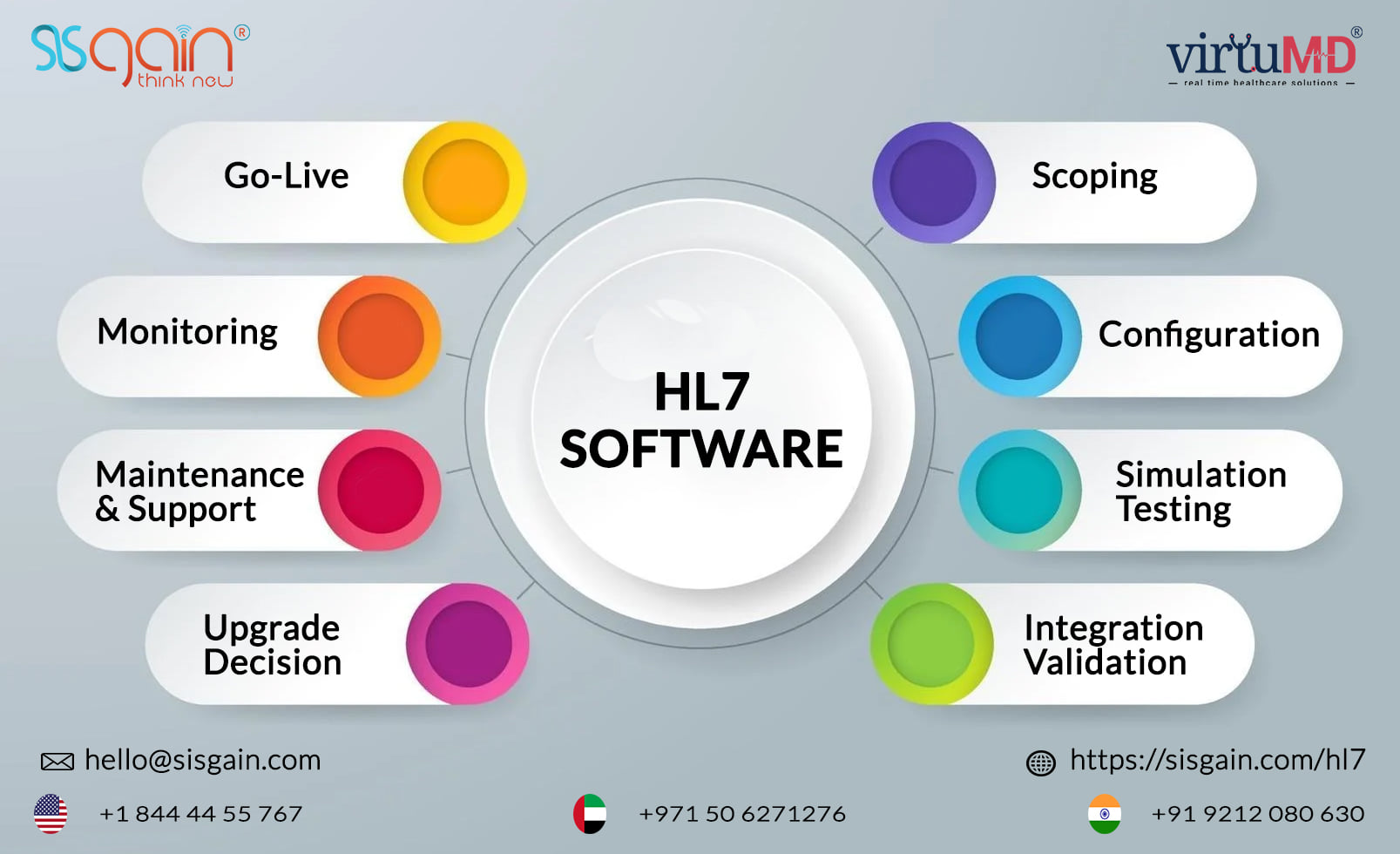Best Practices for HL7 Programming and Development
 Amitsisgain
Amitsisgain
As the healthcare industry continues to evolve and become more digital, there is an increasing need for effective communication between different healthcare systems. HL7 (Health Level Seven) is a set of international standards for the exchange, integration, sharing, and retrieval of electronic health information. HL7 interface development is a critical component of healthcare software development, and it involves designing and implementing software that allows different healthcare systems to communicate with each other seamlessly. In this blog post, we will discuss some best practices for HL7 programming and development.
- Understand the HL7 Standard
Before embarking on HL7 interface development, it is important to have a solid understanding of the HL7 standard. This will help you design and develop software that is compliant with the standard and will ensure that your interface is compatible with other HL7 systems. Familiarize yourself with the different versions of the HL7 standard, including HL7 v2 and HL7 v3. HL7 v2 is the most widely used version, and it is important to understand its message structure, segments, and fields.
- Follow Best Practices for HL7 Integration
When integrating different healthcare systems, it is important to follow best practices for HL7 integration. This includes designing an architecture that allows for seamless data exchange, implementing proper error handling and logging, and ensuring data security and privacy. Follow industry standards for data exchange, such as using XML or JSON for data transmission. Make sure that all data transmissions are encrypted and that proper authentication and authorization mechanisms are in place to protect sensitive healthcare information.
- Choose the Right HL7 Interface Software
Choosing the right HL7 interface software is critical for successful HL7 interface development. Look for software that is easy to use and allows for quick and efficient development of HL7 interfaces. Make sure that the software you choose is compliant with the HL7 standard and supports the version of HL7 that you are using. Look for software that provides comprehensive error handling and logging capabilities, and that allows for easy troubleshooting of interface issues.
- Use HL7 Interface Development Tools
Using HL7 interface development tools can help streamline the development process and ensure that your interface is compliant with the HL7 standard. Look for tools that allow you to quickly create HL7 messages, test interfaces, and troubleshoot issues. Tools such as interface simulators, message editors, and validation tools can save time and reduce the risk of errors.
- Test HL7 Interfaces Thoroughly
Thorough testing of HL7 interfaces is critical for ensuring that the interface is working properly and that data is being transmitted accurately. Create test scenarios that cover all possible use cases and ensure that the interface can handle all scenarios without errors. Use validation tools to check that the messages being transmitted are compliant with the HL7 standard, and user interface simulators to test the interface in a simulated environment.
- Work with Experienced HL7 Interface Developers
HL7 interface development is a complex process that requires expertise in healthcare IT, data exchange standards, and programming. Working with experienced HL7 interface developers can help ensure that your interface is developed correctly and that it meets all industry standards. Look for developers who have experience working with HL7 systems and who have a strong understanding of the HL7 standard.
- Maintain HL7 Interfaces
Once an HL7 interface has been developed, it is important to maintain it regularly to ensure that it continues to function properly. This includes monitoring the interface for errors, making updates as necessary, and performing regular security audits. Regular maintenance can help prevent issues from occurring and ensure that your interface remains compliant with the HL7 standard.
- Document Your HL7 Interface
Documenting your HL7 interface is an essential step in the development process. Proper documentation can help ensure that the interface is developed correctly and that others can understand how the interface works. This includes documenting the interface architecture, message structure, data mapping, error handling, and logging. Use diagrams and flowcharts to visually represent the interface, and provide clear and concise documentation that others can easily understand.
- Implement Proper Error Handling and Logging
Proper error handling and logging are essential for successful HL7 interface development. Implement error-handling mechanisms that can detect and handle errors in real-time, and provide clear error messages that help users understand what went wrong. Implement logging mechanisms that allow you to track interface activity and diagnose issues quickly.
- Stay Up-to-Date with HL7 Standards
HL7 standards are constantly evolving, and it is important to stay up-to-date with the latest versions and updates. Join HL7 user groups, attend conferences and webinars, and stay informed of any changes to the HL7 standard. This will help ensure that your interface remains compliant with industry standards and that you are aware of any updates or changes that may impact your interface.
- Consider Using HL7 Integration Engines
HL7 integration engines are software tools that are designed to facilitate the integration of different healthcare systems. They provide a framework for developing HL7 interfaces and offer a wide range of features and functionalities that can streamline the development process. Consider using an HL7 integration engine if you are developing a complex interface or if you need to integrate multiple healthcare systems.
- Engage in Continuous Improvement
Continuous improvement is essential for successful HL7 interface development. Regularly review your interface, gather feedback from users, and look for ways to improve the interface. This may include making updates to the message structure, improving error-handling mechanisms, or adding new features and functionalities.
In conclusion, Sisgain HL7 interface development is a critical component of healthcare software development. By following best practices for HL7 programming and development, you can ensure that your interface is compliant with the HL7 standard, easy to use, and reliable. It is important to stay up-to-date with the latest HL7 standards, choose the right HL7 interface software, and work with experienced HL7 interface developers. By implementing proper error handling and logging mechanisms, and engaging in continuous improvement, you can ensure that your HL7 interface meets the needs of healthcare organizations and patients alike.
Subscribe to my newsletter
Read articles from Amitsisgain directly inside your inbox. Subscribe to the newsletter, and don't miss out.
Written by
